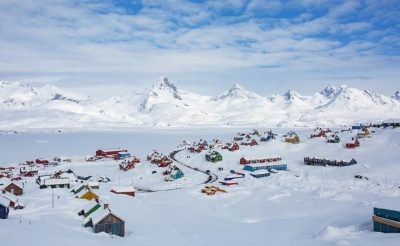
Popular for its vast tundra and immense glaciers, Greenland is the world’s largest island, in fact the largest island country. In terms of land area, it is more than three times the size of the U.S. state of Texas. It is an autonomous Danish dependent territory and has its own parliament. Two-thirds of Greenland lies within the Arctic Circle, with its northern regions lying just 800 km away from the North Pole. The island enjoys continuous daylight for two months every year. More than 80 per cent of the land is covered by ice. A major impact of global warming is seen in Greenland as the ice cover is melting away faster than ever. This crisis has however increased access to Green- land’s mineral resources.
We know that Greenland is a part of the Kingdom of Denmark, but its home-rule government is responsible for most of its domestic affairs. The people of Greenland are primarily Inuit.
When it comes to Greenland, one of the most interesting question is its name- why is it called Greenland when it is mostly covered in ice? The answer lies in history. An exiled Viking named Eric the Red came up with this name as a means to encourage others to follow him and establish new settlements in the region. It must be noted that South Greenland (where Erik the Red settled) is actually green during the summer. Another interesting fact about Greenland is that it has a very limited road transport system due to the rugged terrain, its deep fjords that outline the coastline, the ice sheets, and the very small population. In fact, all roads end at the outskirts of towns.
Picture Credit : Google




